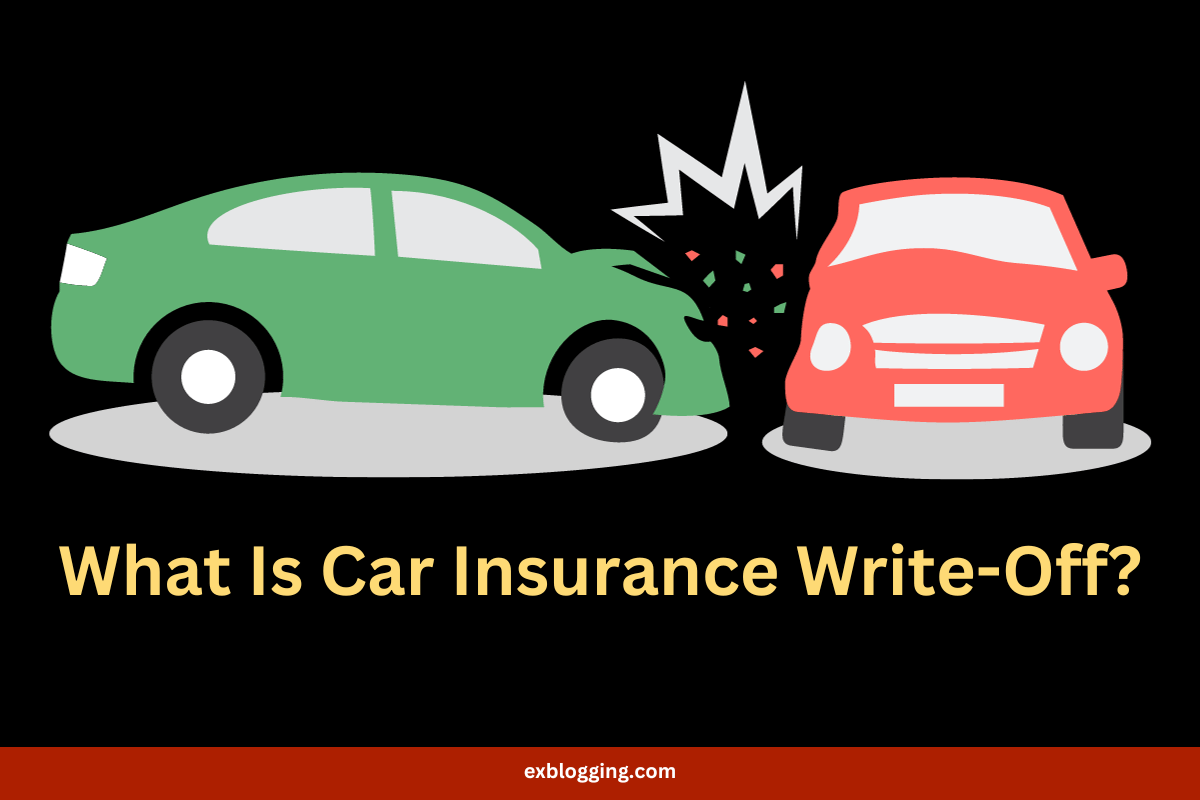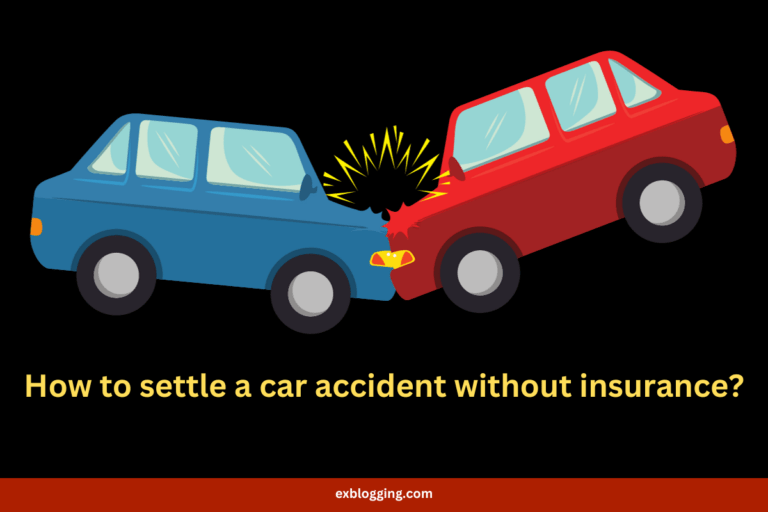When is a Car a Write Off Insurance?
The process of declaring a car as a “write-off” for insurance purposes is frequently discussed after a collision or another significant incident. But how is this decision made? Who determines if a vehicle is a “write-off”? And what implications does it have for you as the car’s insurer?
What is a car insurance write-off?
A car might be designated as a write-off due to extensive structural damage that makes it unsafe to drive or when the repair costs are deemed too high by the insurer.
However, a car can also be categorized as a write-off even with less damage, and it may still be repairable enough to be roadworthy again.
This is what transpires when a car is declared a write-off, the situations under which it can occur, and what policyholders can anticipate.

What leads to cars being declared as write-offs?
In the insurance industry, a vehicle gets labeled as a write-off if the damage it sustains is deemed uneconomical to repair or if it’s considered beyond repair and unsafe for driving.
Insurers determine whether a car is worth fixing by comparing the cost of necessary repair work to the car’s value. They use a ‘repair-to-value’ ratio, and this ratio varies among different insurance companies.
For example, let’s say a car is valued at £10,000, and the insurer applies a 60% repair-to-value ratio. This means the car would be declared a write-off if the repair costs exceed £6,000.
Besides repair expenses, additional factors may influence this decision, including considerations like the cost of providing a courtesy car during the repair period, especially if such coverage is part of the driver’s insurance policy.
What Payout Can Be Expected for a Written-Off Car?
In the case where a car is unsafe to drive or repairing it becomes prohibitively expensive, individuals with third-party fire and theft or comprehensive insurance are entitled to receive a payout. This payout, termed a ‘settlement fee,’ corresponds to the current value of the car.
Drivers with Guaranteed Asset Protection (GAP) insurance will also be eligible for a payout. This payout covers the disparity between the car’s current value and the original purchase price. GAP insurance is commonly associated with new cars, which experience a substantial depreciation in value once they are purchased and driven off the dealer’s lot.
What Types of Damage Can Result in an Insurance Write-Off?
Damage leading to an insurance write-off isn’t limited to major collisions. Significant harm can arise from events like fires, floods, vandalism, and even theft.
If a stolen vehicle is recovered in a state deemed irreparable, it may be declared a write-off. However, it’s important to note that if a stolen car is not found, it won’t be classified as a write-off. In such cases, the insurer typically compensates the policyholder with the cost of a replacement car, determined by the valuation of the stolen vehicle.
How Can I Determine If My Car Is Truly a Write-Off?
The determination of a car’s write-off status is a task assigned to qualified insurer assessors. They adhere to the industry-wide Salvage Code Of Practice to decide whether a damaged vehicle should be permanently taken off the road and sent to a scrap yard or if it’s reparable.
The Code classifies write-offs into different categories based on the severity of the damage. The assessor records the car’s category in the Motor Insurance Anti-Fraud and Theft Register (MIAFTR) database, which aids in tracking stolen vehicles and detecting fraud.
The categorization of a car indicates the extent of the damage, providing the owner with insight into whether they can sell the car. Prospective buyers also benefit from the clear indication of the car’s condition through its grouping, helping them determine if it’s officially considered road-worthy.
What Do the Different Write-Off Categories Mean for Your Car?
On October 1, 2017, the Association of British Insurers updated the way they categorize write-offs for vehicles. Previously, there were four categories: A, B, C, and D, which indicated the extent of the damage and whether repairing it was cost-effective.
Now, categories S and N have replaced C and D, aiming to provide clearer insights into the specific issues that need fixing to make the car safe and roadworthy.
Here are the current categories:
- A – Scrap: The vehicle is considered unfit for repair, should not be driven again, and must be crushed at an authorized treatment facility.
- B – Break: The vehicle is deemed unsuitable for repair and should not be driven again, but its usable parts can be recycled in other vehicles.
- S – Repairable Structural: The vehicle has structural frame or chassis damage that needs repairing before it can be driven again. The V5C logbook will include a statement for buyers to make informed decisions.
- N – Repairable Non-Structural: The vehicle has no damage to the structural frame or chassis, but other components like steering or suspension may need repairing for the car to be safe to drive.
What Comes Next After Your Car is Declared a Write-Off?
When your car falls into categories A or B, it heads for scrapping. However, if it’s classified as N or S, you have options. You can accept the write-off value from the insurer, get a new car, or even buy back your car if the damage isn’t severe.
Once the insurer pays for the write-off, they become the legal owner. You must inform the DVLA by completing the Notification of Sale slip found on the registration document and sending it back.
Should you choose to buy back your car, any repair costs will be on you. If the insurer doesn’t sell it back, they might auction it through a salvage company.
For Category S, the insurer must send a V23 form to the DVLA to update its status, not necessary for Category N.
Is It Wise to Buy a Category S or N Car? Unraveling the Pros and Cons
When it comes to purchasing a category S or N car, buyers often weigh the benefits against potential risks. These cars, often available at an appealing price, can be a cost-effective option for those willing to undertake repairs.
While this legal practice allows buyers to save on repair costs with affordable labor and parts, caution is advised. Some fraudulent sellers attempt to present category S and N cars as undamaged vehicles, misleading buyers into overpaying.
To navigate this decision wisely, consider the following steps when buying a used car:
- Verify DVLA Details:
- Ask the seller for the make, model, and registration number, ensuring they match DVLA records on the official gov.uk website.
- Check MOT Test Information:
- Request the MOT test number from the seller and verify its status and history on gov.uk. Check for any safety recalls on the vehicle.
- Examine V5C Certificate:
- Inspect the V5C vehicle registration certificate for a ‘DVL’ watermark. Ensure the serial number falls within valid ranges, avoiding potential issues with a stolen log book.
- Validate Log Book Details:
- Confirm that the details in the log book align with the information provided by the seller.
- Verify Vehicle Identification:
- Check that the vehicle identification number (VIN) on the chassis and the engine number match the details in the log book.
These steps empower buyers to make informed decisions and protect themselves from potential fraud in the used car market.
Frequently Asked Questions
What Determines If a Car Qualifies for a Write-Off?
Ever wondered what makes a car eligible for being labeled a write-off? The IRS does permit writing off vehicle expenses, but the rules are stringent. If you use your car for work and plan to deduct those business miles, it’s crucial to maintain a thorough log of all related expenses. This includes parking fees, tolls, fuel, car washes, repairs, and maintenance costs.
Is it Possible to Deduct Car Insurance Costs on Your Taxes?
If you primarily use your car for personal reasons, it’s usually not possible to claim your car insurance costs as a deduction on your tax return. Deductions for auto insurance premiums are generally reserved for those who use their cars for business-related purposes.
What Size Car Qualifies for Tax Deductions?
When the IRS talks about a “luxury car,” they mean any four-wheeled vehicle mostly used on public roads. To be eligible for a tax deduction, your car’s unloaded weight should not exceed 6,000 pounds (3 tons), regardless of its purchase price.
Explore More: Discover related Topics for Further Insights and Guidance:
What If Car Insurance Doesn’t Pay Enough?
How to Settle a Car Accident Without Insurance?
What happens if you wreck a financed car without insurance?






